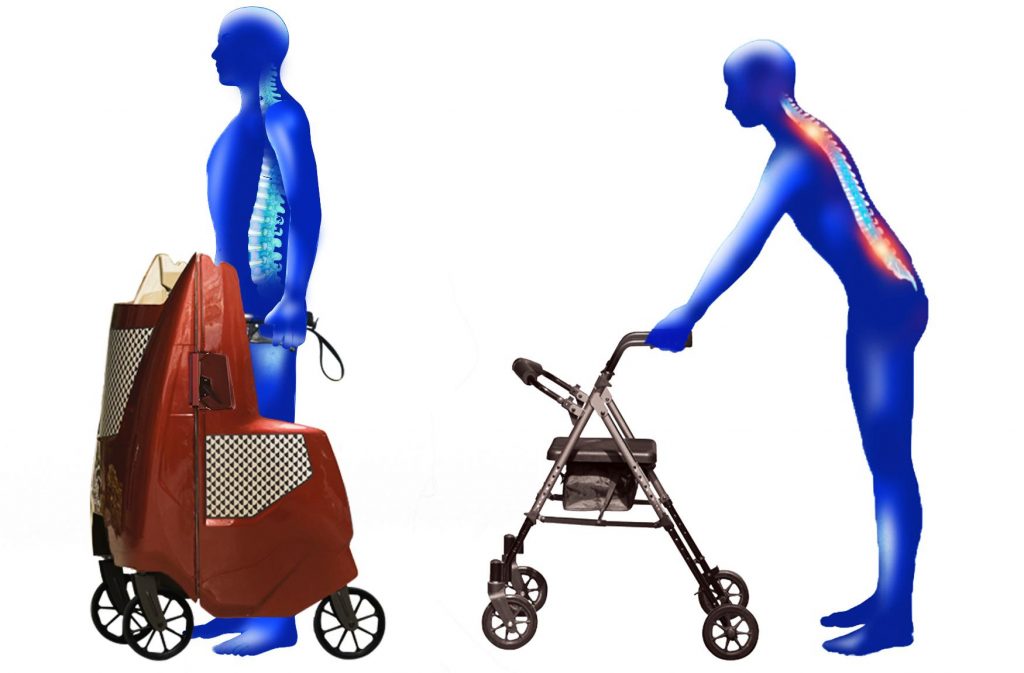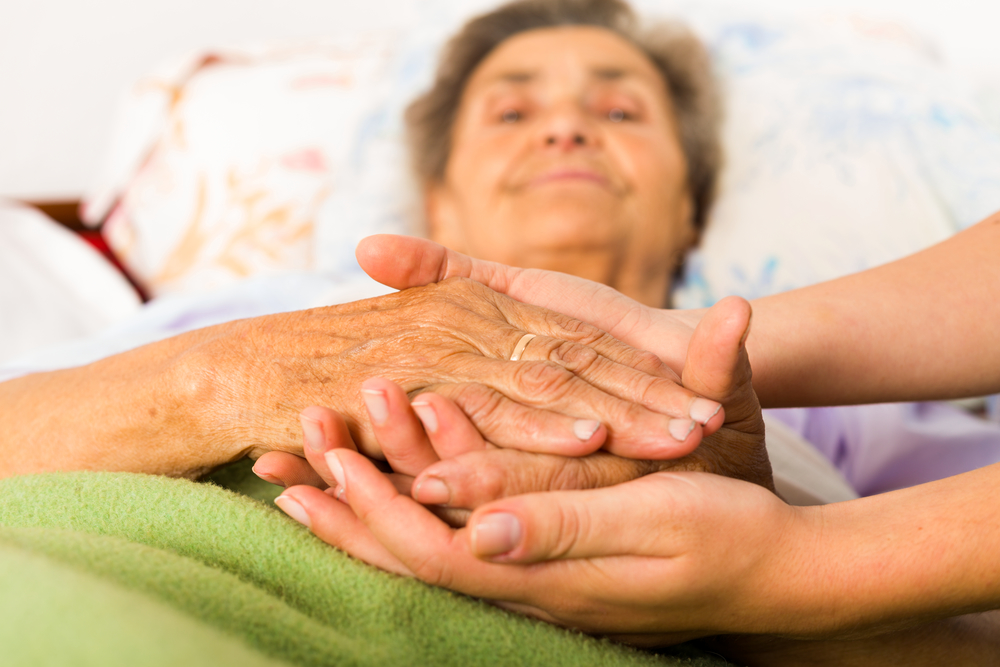08 Dec 2017
How to Treat and Prevent Osteoporosis
Osteoporosis is a disease that reduces the density and quality of the bones. It develops over time and can eventually become quite debilitating. But, there is good news, if you have osteoporosis, there are treatments to lessen bone loss and decrease the risks of the disease. The better news is, if you take a few easy precautions, the condition is preventable altogether. Keep reading for helpful tips for treating this condition if you have it, and preventing it if you do not.
Preventing Osteoporosis
Preventing osteoporosis is easy. The key is to make a few lifestyle changes that will not only help to prevent this condition, but ultimately will help your overall health as well. To get you going on the path the healthy bones, try some of these ideas:
- Alter your diet
Preventing osteoporosis is all about strengthening your bones, which starts with the foods you feed your body. Increasing your lean protein intake is a great place to start. Also, add foods that are rich in vitamin D and calcium as well.
- Calcium
It is no secret that calcium is a key nutrient in healthy bones. Adults should aim to get about 1,000 mg of calcium every day. Postmenopausal women should increase it to 1,200 mg daily. It is best to get your calcium from food sources, such as dairy. If you cannot get enough calcium through the food you eat, taking supplements can help make up the difference. Be careful not to exceed 2,000 mg of calcium daily.
- Vitamin D
Vitamin D works hand in hand with calcium. Older men and postmenopausal women should aim for 800 mg daily. Drink milk that contains this important vitamin or take supplements. You can also get vitamin D through exposure to natural sunlight. Just a few minutes daily can help increase your level of vitamin D without greatly increasing your risk of skin cancer.
- Exercise
Exercise has many benefits, and increasing bone mass is one of them. Engaging in light exercise for 30 minutes three times a week is all it takes to keep your bones healthy.
- Quit smoking
There are many reasons to quit smoking. Improving your bone health is high on the list. Cigarettes can speed bone loss, so, the earlier you stop, the sooner your bones can start getting stronger.
Treating Osteoporosis
If you already have osteoporosis, follow some of these steps to help manage and treat it.
- Medication
There are many medications available that help treat the symptoms of osteoporosis. Medications are great for people who already have bone density loss and are already at high risk for bone fracture.
- Add calcium and vitamin D to your diet
These nutrients are just as good at treating osteoporosis as they are for preventing it. So, even if you were not able to prevent the condition, increase your intake of them either through diet or supplementation.
- Avoid alcohol and caffeine
Excessive amounts of alcohol and caffeine can have an adverse effect on your bones. Since your bone health is already compromised with osteoporosis, it is best to use alcohol and caffeine in moderation or avoid them altogether. Reducing alcohol consumption also helps reduce the chance of falling, which can be hazardous to those with osteoporosis.
- Exercise and quit smoking
The benefits of exercise and liabilities of smoking will both continue even though osteoporosis has set in. So, ditch the cigarettes and ramp up your exercise regime.
- Hormone replacement therapy (HRT)
Hormone replacement therapy is often a good idea for postmenopausal women. Estrogen is known to help strengthen bones and prevent fractures. It can be prescribed on its one or with progestin. There are potential risks with HRT, so doctors tend to not prescribe it just for osteoporosis.
15 Sep 2017
Discover the Wonders of the Upright Walker
Over six million people in the United States need to use some type of assistive device to help with mobility. It’s not only the elderly who often need the aid of a walker, wheelchair, or cane. Many young and middle-aged individuals face health issues that make walking unassisted difficult. Multiple sclerosis, Parkinson’s, and Fibromyalgia are a few of the disorders that affect people’s ability to walk. With the advancements in technology and science, strides have been made in aiding people with disabilities. One such advancement is that of the upright walker. This newer product gives people another option for getting around gracefully. Let’s take a closer look at some of the details of the upright walker.
Helps you stand up tall
Traditional walkers are constructed to reach right about the waist level. When using a traditional walker, you set it right in front of you and step behind it. This means you must stoop over and lean down into the walker to walk. The upright walker got its name in part because it helps the user stand upright when walking. The handles are elevated to a height that allows people to have the walker at a comfortable height. People have the ability to look straight ahead instead of down at the pavement. This makes them more safe and comfortable.
Framework for the upright walker provides safety
The framework of the upright walker surrounds the user on both sides and allows for a footstep of room. This means as people move forward, they are boxed in on each side for their entire movement. With traditional walkers the frame is set in front of you so that if you stumble to the side for any reason, there is nothing next to you. The upright walker is beside you every step of the way. If you would stumble to the side, you would have the support of the framework on both sides to help balance you.
Shock absorbers and brakes
The upright walker is somewhat like a bike with mini tires and shock absorbers. This helps move you along bumpy terrain without all the jostling. Uneven surfaces are no problem with the use of an upright walker. In addition, you grip handles with brakes that extend from the armrests. If you need to stop yourself from moving along or you’re going down a slight hill and need some brake power, you will have it at your fingertips.
Discover the ease and comfort of walking with the upright walker. Whether you need to go around the block or to the mailbox, using this innovative product will make walking so much easier.
16 Aug 2017
Experiencing Depression as a Senior
It is believed that around 25% of all seniors will suffer from depression at some point – a higher proportion than the rest of the adult population. Thankfully, as a society we are becoming more comfortable talking about mental illness generally and depression specifically – so knowing what the signs are, and steps that can be taken to address possible depression can be useful if you think you or a loved one may be suffering from this illness.
What Is Depression?
While all of us are likely to experience feelings of sadness at different points in life, depression differs in that these feelings typically last for longer than two weeks and can impact everyday functioning. The DSM-5 measure classifies depression as experiencing at least five symptoms for an extended period of time from a list of issues such as daily fatigue, insomnia, diminished interest in all activities and feelings of worthlessness.
Why Is Depression Prevalent In The Senior Population?
There are many factors that may contribute to increased risk of depression in the senior population. There are some life changes that occur with aging that may trigger feelings of depression – losses of various kinds: from the death of a loved one, to the loss of physical abilities and associated freedoms, to the loss of social support systems. With the changes in family structure, and grown children being more geographically dispersed, there is a greater chance of an elderly person living in isolation and experiencing loneliness and depression as a result. With the onset of other illnesses, depression may be more likely to occur either as a result of the illness itself or as a side-effect of drugs used to treat the primary issue.
Options To Treat Depression
If you think you or a loved one may be suffering from depression, a good first step is to discuss your concerns with your Primary Care Physician. There may be changes that can be made to an existing treatment plan that could alleviate the symptoms being experienced, along with other treatments such as counseling and psychotherapy, or medication to specifically address depression.
Along with medical interventions, building a support system can be very helpful for someone suffering from depression. Finding strategies to keep in contact with the outside world can be beneficial, be that by meeting up with friends, joining special interest groups with people who share similar interests, or volunteering. It’s important to know that you are not alone, and that help is out there.
One of the most difficult things about seeing your loved one grow older is watching his or her mental and physical abilities decline. Old age is inevitable and many people are prepared to care for seniors as they age, but that doesn’t make it any easier when your loved one suddenly can’t remember details the way they did before or can’t participate in the same physical activities they used to love. If you are starting to notice a decline in your loved one’s abilities, the most important thing is to communicate, so that both of you are prepared for what will happen in the future and understand how best to work through it.
Make sure that when you start the conversation, both of you are in a comfortable place, preferably somewhere that they feel at home. Throughout the discussion, make sure to reference how you feel, and ask how they feel. Try framing sentences around your inner feelings and concerns: “I’m worried about you because…” or “I care about you a lot, which is why I’m telling you this…” are phrases that work well. This helps show the other person that you are coming from a place of care and ultimately reinforces the idea that you will work through these problems together, no matter what.
With that said, don’t shy away from the tough parts of the conversation. Talking about subjects such as financial and legal problems may be difficult, but it is important to discuss how you are going to be able to handle your loved one’s ability to drive, deal with bank statements, or fill out medical paperwork. In many cases, the other person is used to independence and does not want to give it up; while this is understandable, you should do your best to repeat that you care about them and want them to be healthy and happy, which is why it is necessary for you to intervene in these matters.
This applies to other issues such as the possibility of hiring a caretaker or installing special equipment in your loved one’s home in order to better accommodate their personal needs. Honesty is key: emphasize the idea that although it is difficult, these changes are necessary, because without them, he or she will not be able to live a safe and comfortable life. Ultimately, show them that you are there in their best interest, and that although they are going through a difficult transition, they will deal with it with your help.








